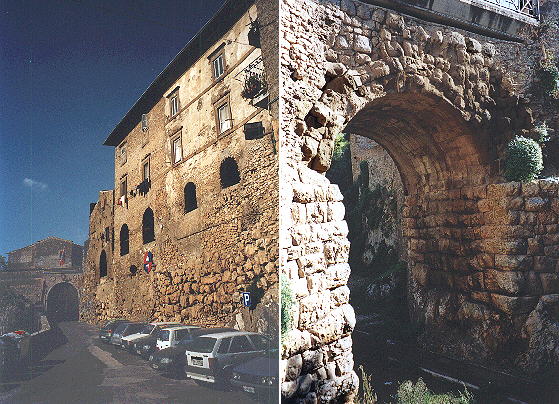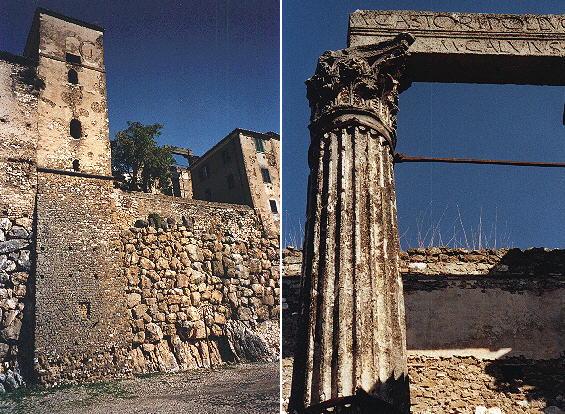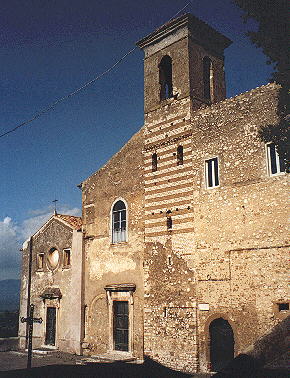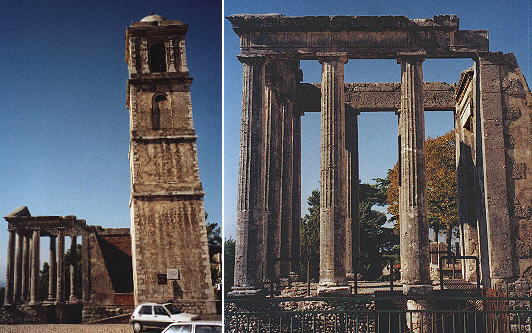  Ferdinand Gregorovius' Walks - Cori
Gregorovius and his friend Muller reached Cori from Norma, so
they arrived at Porta Ninfina which still today looks very much medieval and provides
a very evocative approach to the visit of the town.
A steep ravine outside Porta Ninfina is spanned by the Roman Ponte della Catena constructed of blocks of tufa, with an impressive arch. Cori is built on a hill with very steep streets leading to the top of it (the Arx or Cori Alta) and from there it offers a wide view over the Castelli Romani (Velletri, Genzano, Ariccia and Albano), the plain and the sea. This area was the set for the events narrated in Virgil's Aeneid.
The use of polygonal walls in Cori is mainly directed to making artificial terraces for streets and buildings. This is particularly visible in the wall sustaining the Temple of Castor and Pollux.
Of the temple, facing the abandoned church of San Salvatore, only two columns and part of the inscription are left, but it is enough to let us imagine how fine it was. The street leading to Cori Alta then reaches the church of S. Oliva, made up by pulling down the wall between two minor churches. This church and the adjoining building were erected on the site of a Roman temple and the bell tower, like a geological map, shows the different masonry techniques used over the centuries.
On the top of the hill the Romans built a Temple in honor of Hercules, which was later on included in a church (but after World War II only the bell tower survived).
The Temple of Hercules was studied by many Renaissance artists, including Raphael, and it was the subject of a famous print by Piranesi. The reason for all this interest was in the use of Doric columns having the proportions (height versus diameter) of Ionian columns. Gregorovius liked Cori very much but not only for its memories of the past: the air was fresh and balmy, the wine excellent and figs were sweet and cheap. With the description of Cori, Gregorovius ended his account of the Volsci Mountains. Introductory page on Ferdinand Gregorovius Valmontone and Colonna Segni Norma Other walks: The Roman Campagna: Palestrina Genazzano Paliano Anagni The Ernici Mountains: Ferentino Alatri On the Latin shores: Anzio Nettuno and Torre Astura Circe's Cape: Terracina San Felice The Orsini Castle in Bracciano Subiaco, the oldest Benedictine monastery See my Home Page on Baroque Rome or my Home Page on Rome in the footsteps of an XVIIIth century traveller. |
All images © 1999 - 2003 by Roberto Piperno. Write to romapip@quipo.it




